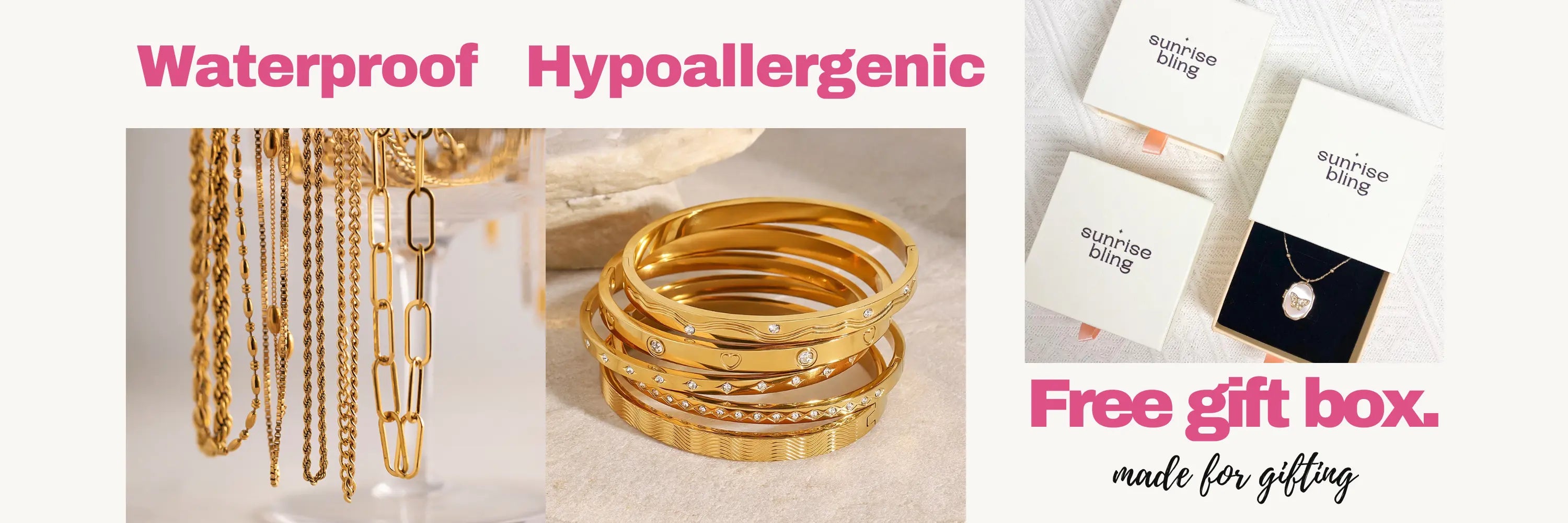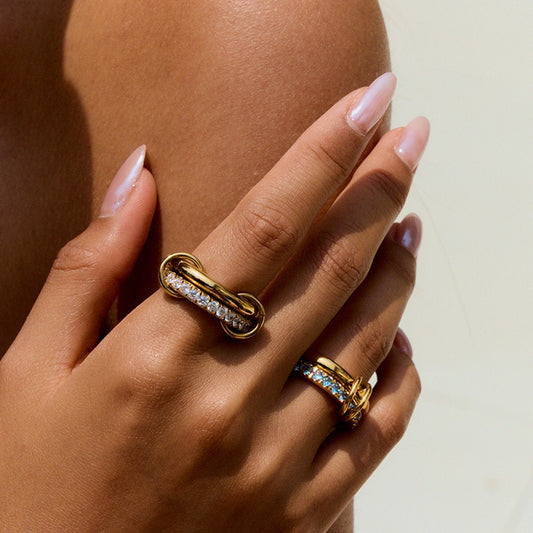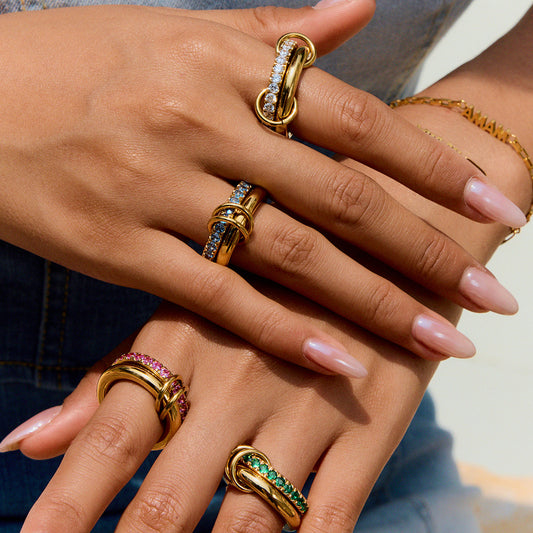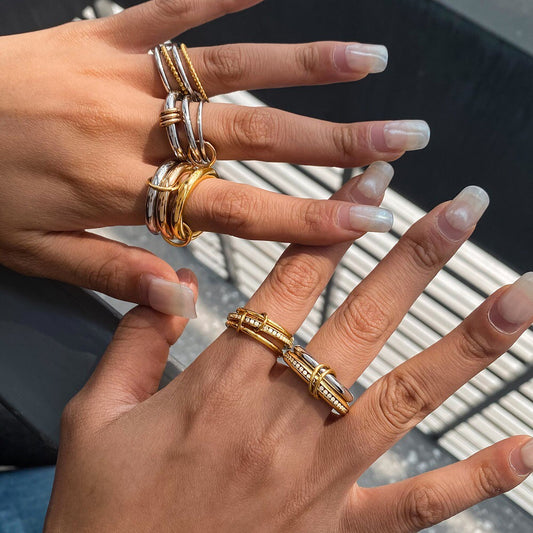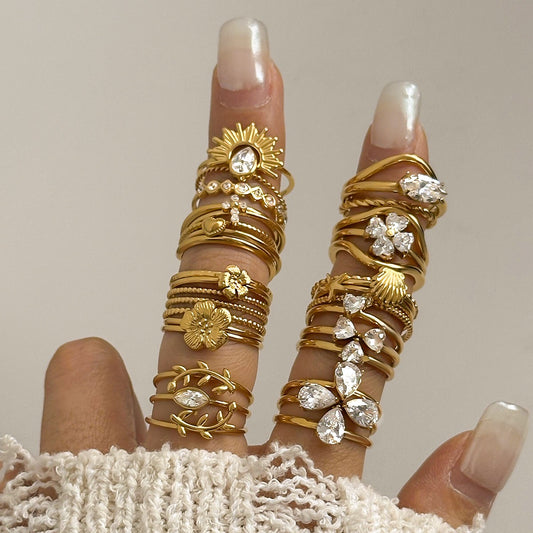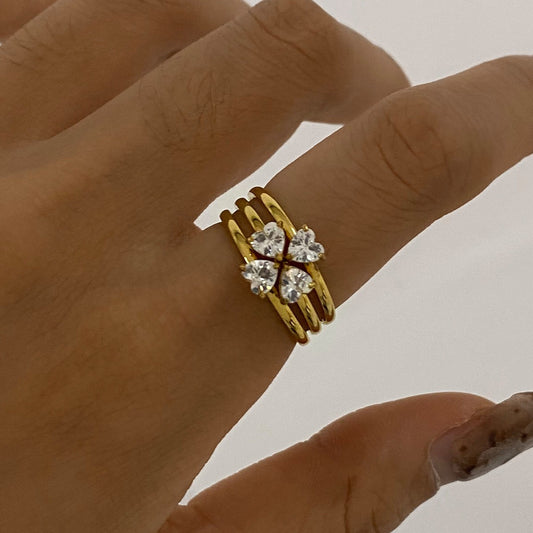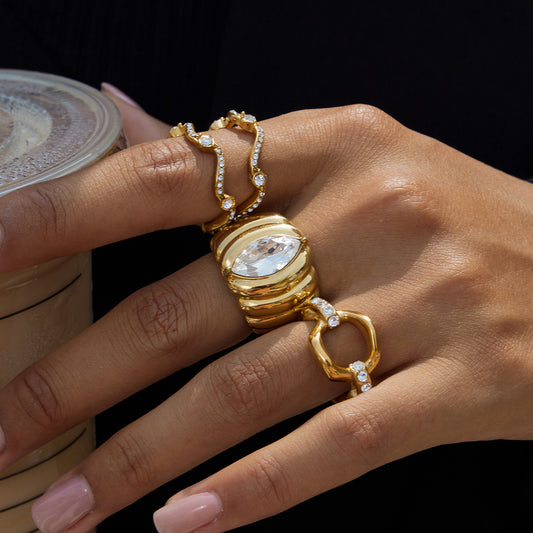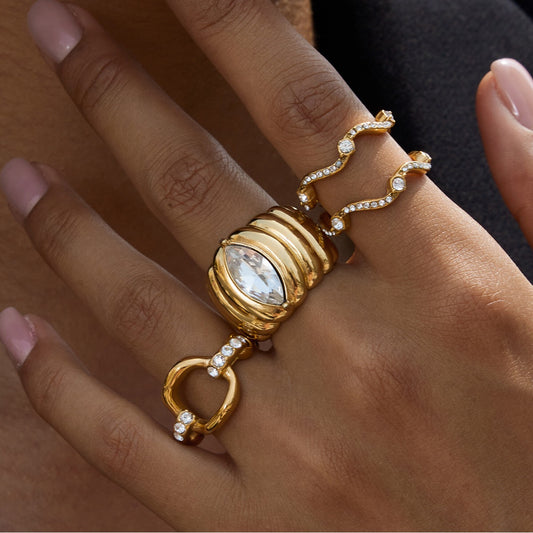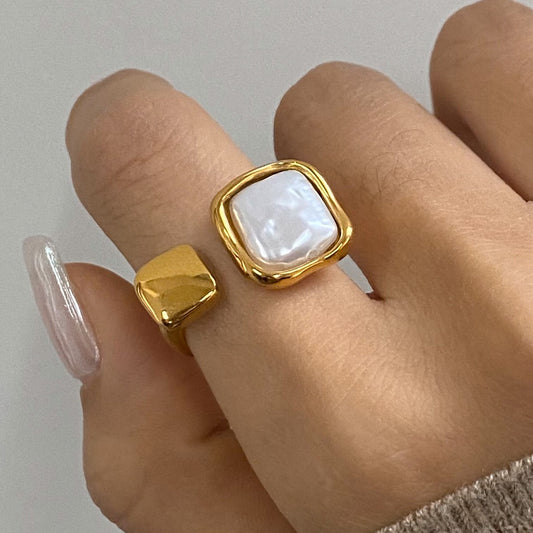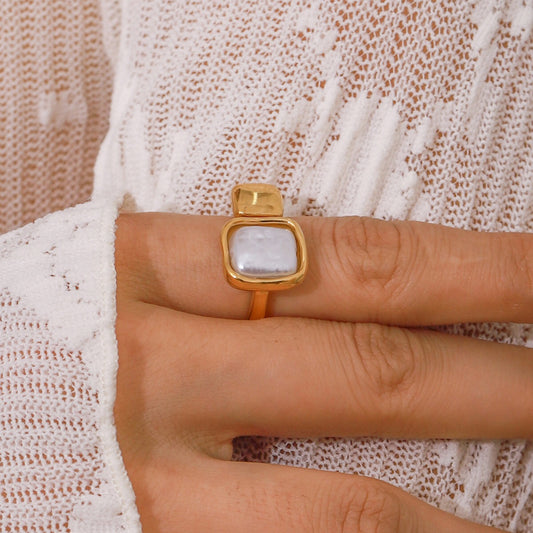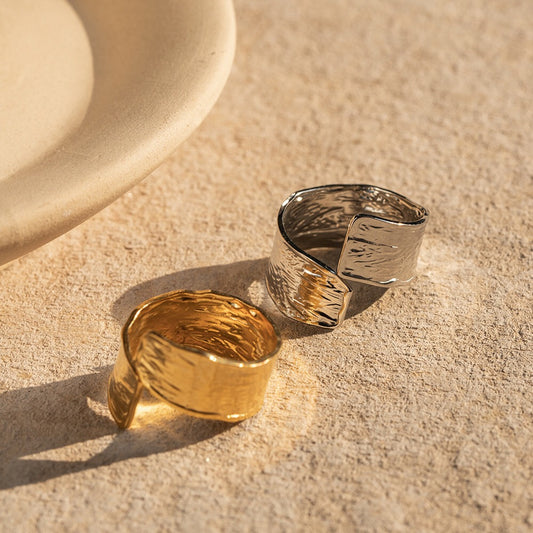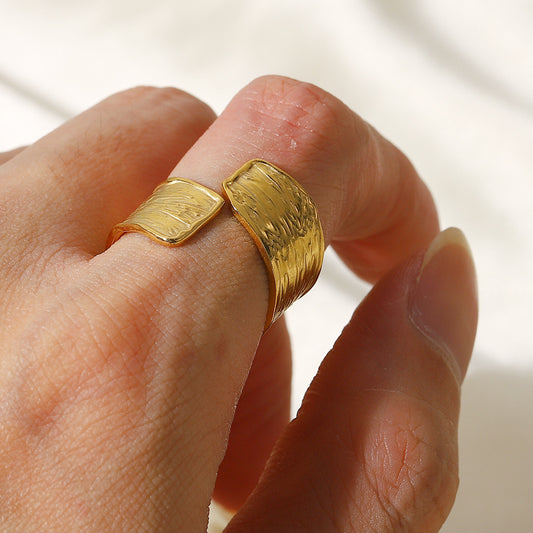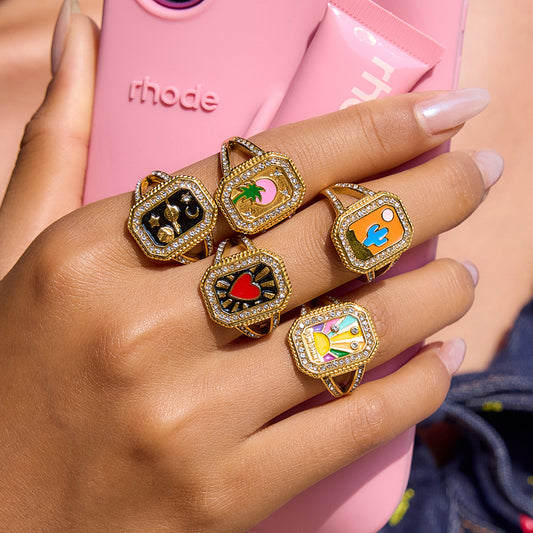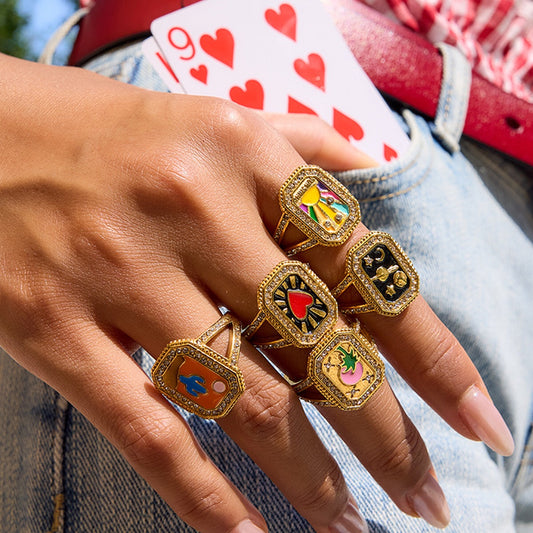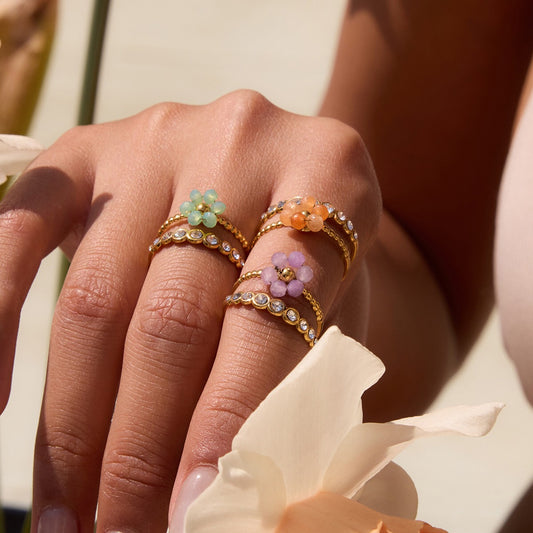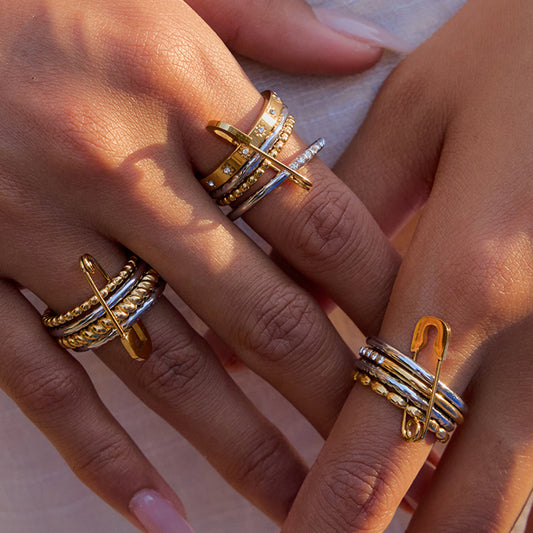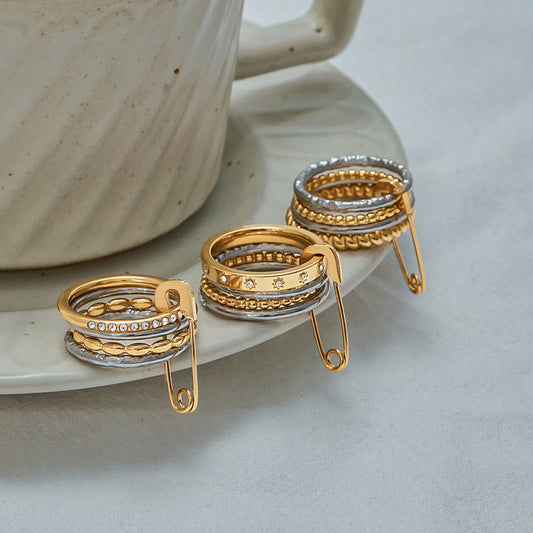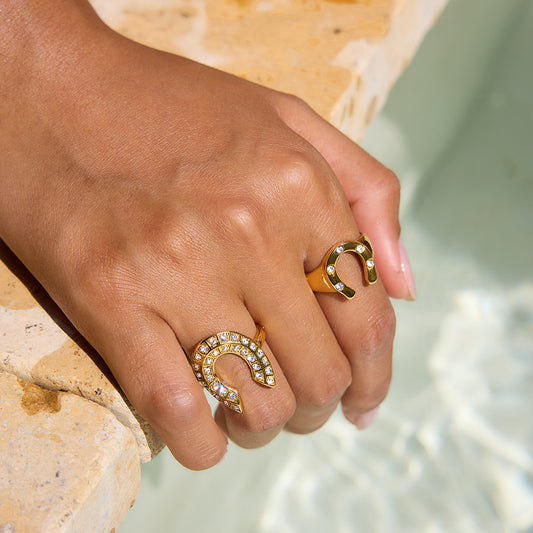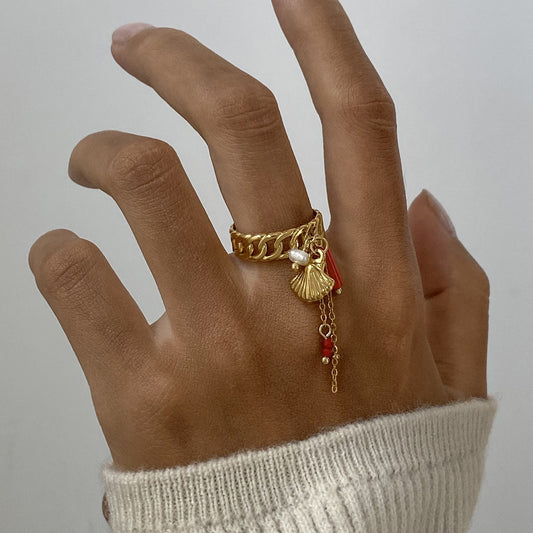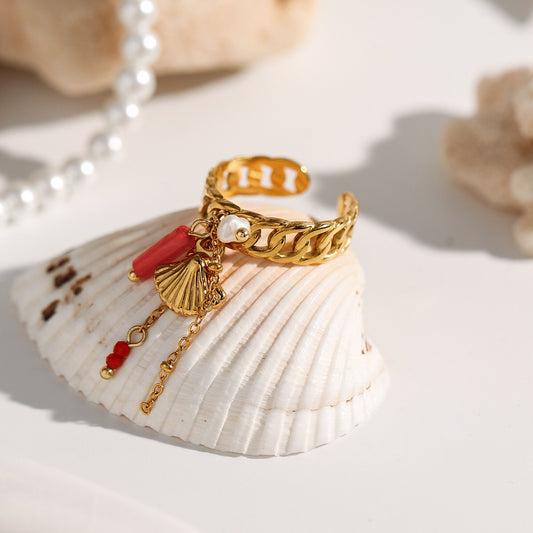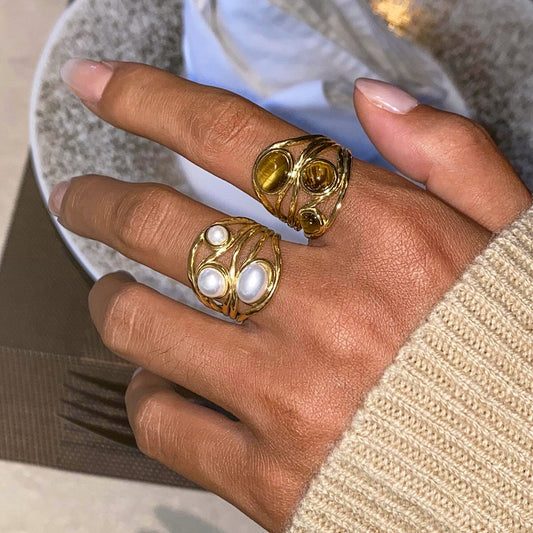Diamond wedding bands are the ultimate symbol of eternal love and commitment, blending timeless elegance with the durability needed for a lifetime of wear. The global necklace market size was valued at USD 50.03 billion in 2024. The market is projected to grow from USD 52.32 billion in 2025 to USD 75.85 billion. What makes them so beloved? Unlike plain metal bands, diamond wedding bands add a touch of sparkle that celebrates the joy of marriage—yet they’re understated enough for daily wear, from busy workdays to family gatherings. Whether you’re selecting one for your own wedding or gifting it to your fiancée as a pre-wedding surprise, a diamond wedding band is a piece that will tell your love story for decades. This guide covers everything you need to know about diamond wedding bands, from their design to how to care for their lasting shine.
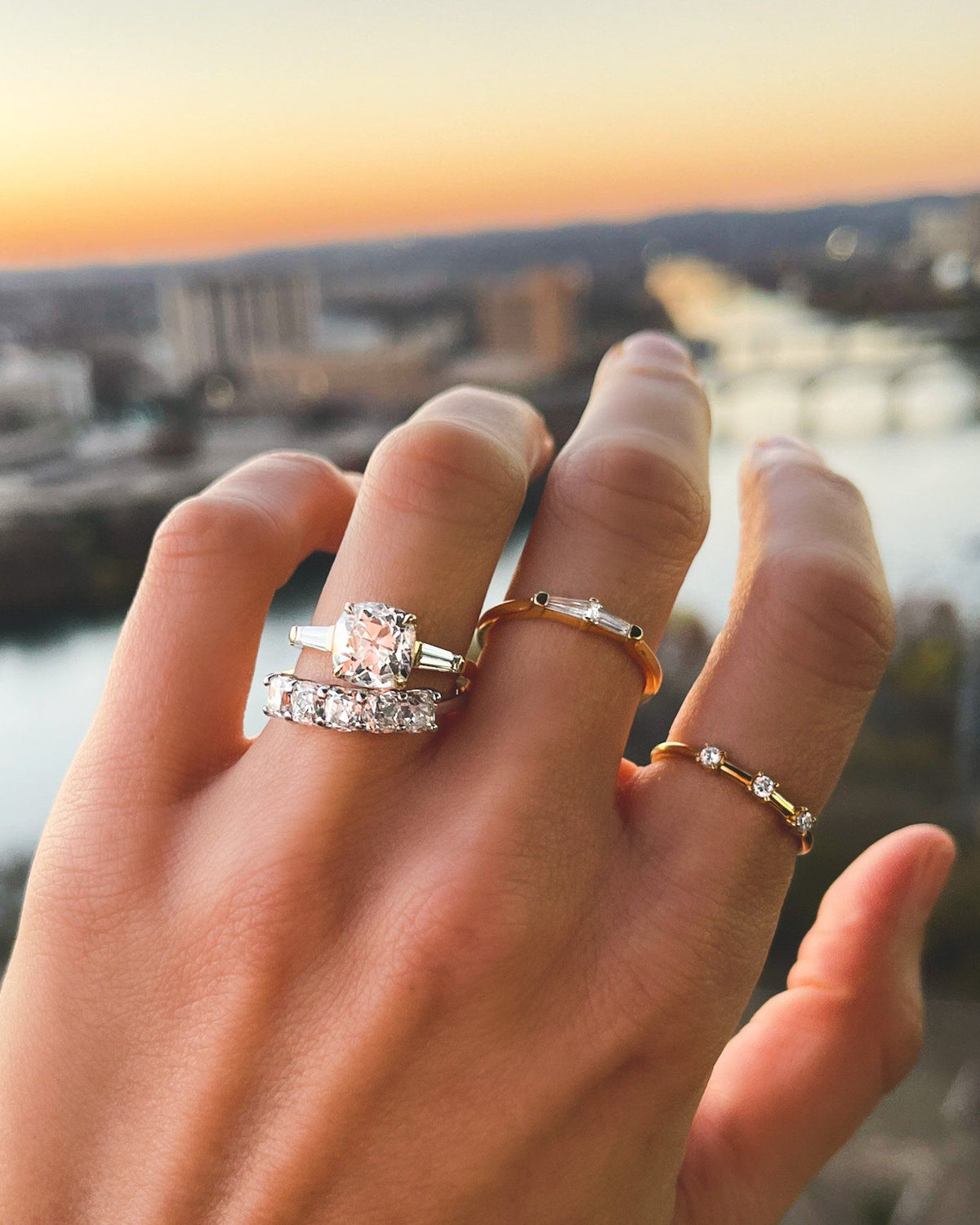
What Are Diamond Wedding Bands?
A diamond wedding band is a circular band of metal (typically gold, platinum, or silver) set with one or more diamonds, designed to be worn as a symbol of marriage. Unlike engagement rings (which often feature a single large center diamond), wedding bands prioritize symmetry and subtlety—diamonds are usually smaller, evenly spaced, or integrated into the band’s design to create a cohesive, wearable look. They’re crafted to withstand daily use: diamonds are the hardest natural substance (10 on the Mohs scale), and metals like platinum or 14k gold are durable enough to resist scratches and wear. Diamond wedding bands come in styles for both partners, though designs for women often feature more intricate diamond settings, while men’s styles tend to be sleeker and more minimalist.
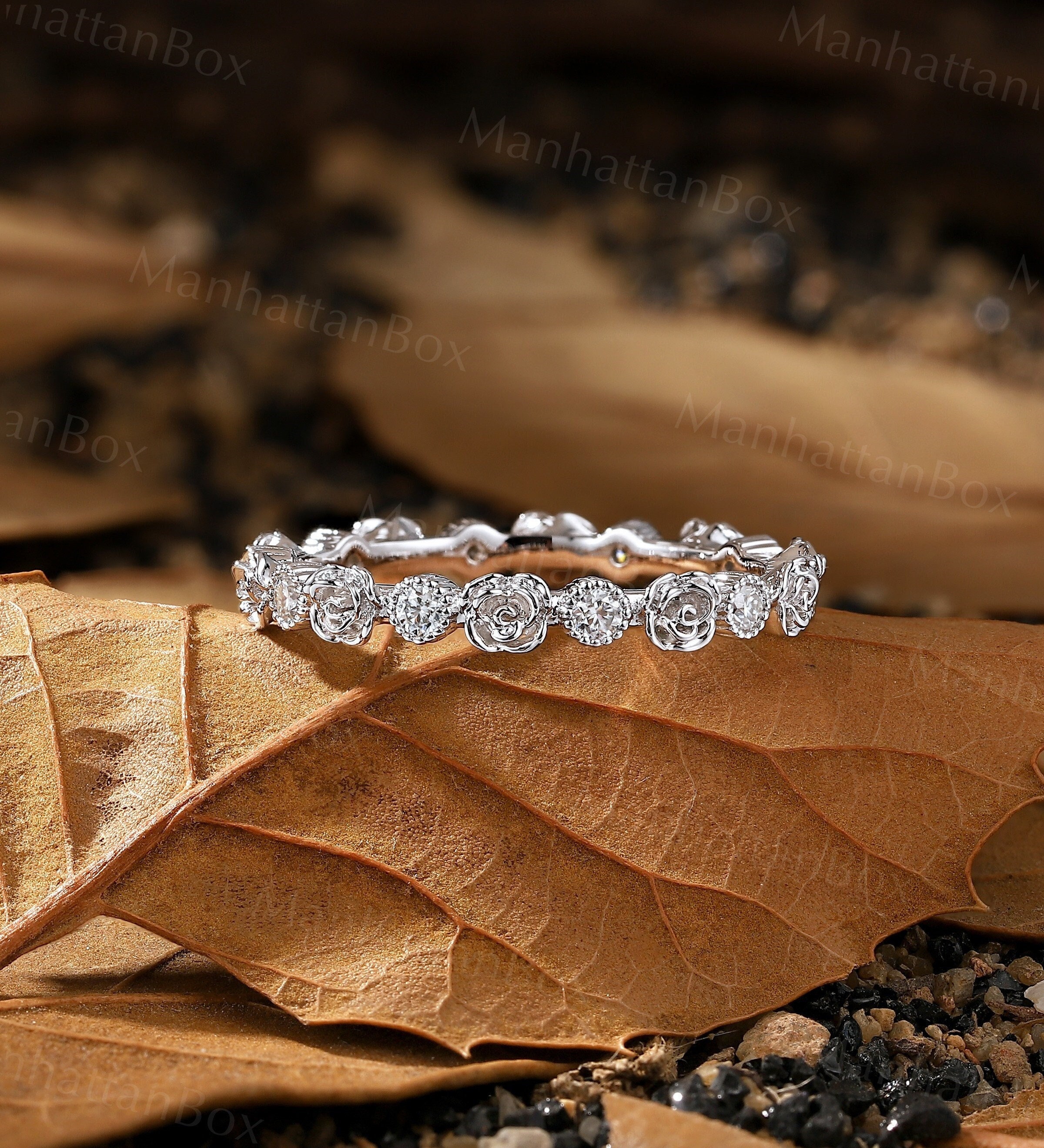
Key Characteristics of Diamond Wedding Bands
-
Diamond Settings: The way diamonds are held in the band impacts both style and security:
-
Channel Setting: Diamonds are set in a narrow “channel” cut into the band, with no prongs visible. This creates a smooth, continuous line of sparkle and protects diamonds from snagging (ideal for active lifestyles).
-
Pavé Setting: Tiny diamonds (usually 0.01–0.05 carats each) are set closely together with small prongs, covering part or all of the band. The term “pavé” (French for “paved”) refers to the diamond’s 密集 arrangement, creating a “paved” look of sparkle.
-
Bezel Setting: A thin metal rim wraps around each diamond, holding it securely in place. Bezel settings are low-profile and modern, great for those who prefer a sleek, contemporary look.
-
Eternity Setting: Diamonds encircle the entire band, symbolizing “eternal love.” Full eternity bands are popular for women, while half-eternity bands (diamonds on the top half) are more practical for daily wear (no diamonds rub against the palm).
-
Metal Types: The band’s metal affects its durability, color, and cost:
-
Platinum: The most durable option—naturally white, hypoallergenic, and resistant to tarnish. It’s also the most expensive (2–3x the cost of gold) but retains its appearance for a lifetime. Ideal for those with sensitive skin or who want a luxury piece.
-
14k Gold: The most popular choice—available in yellow (warm, classic), white (enhances diamond sparkle), and rose (romantic, trendy). 14k gold balances durability (harder than 18k gold) and value, making it perfect for everyday wear.
-
18k Gold: More pure gold (75%) than 14k—softer and more luminous, but prone to scratches. Best for those who prioritize luxury over maximum durability, or who plan to wear the band occasionally (e.g., for special events).
-
Sterling Silver: Rare for diamond wedding bands (silver is soft and tarnishes easily), but affordable options exist for those on a budget. Silver bands are best for occasional wear, not daily use.
-
Diamond Quality: While wedding bands use smaller diamonds than engagement rings, quality still matters:
-
Cut: “Good” or “Very Good” cuts are sufficient—small diamonds don’t need the same precision as large center stones, but a better cut ensures more sparkle.
-
Color: G-J (near-colorless) is ideal—these diamonds look white to the naked eye and cost less than D-F (colorless) grades.
-
Clarity: SI1–SI2 (slightly included) is acceptable—small inclusions won’t be visible without magnification, and this grade keeps the band affordable.
-
Carat Weight: Total carat weight (TCW) for women’s bands ranges from 0.10–1.00 carats; men’s bands typically have 0.05–0.50 TCW. The number of diamonds depends on size—e.g., a 0.50 TCW band might have 10 small 0.05-carat diamonds.
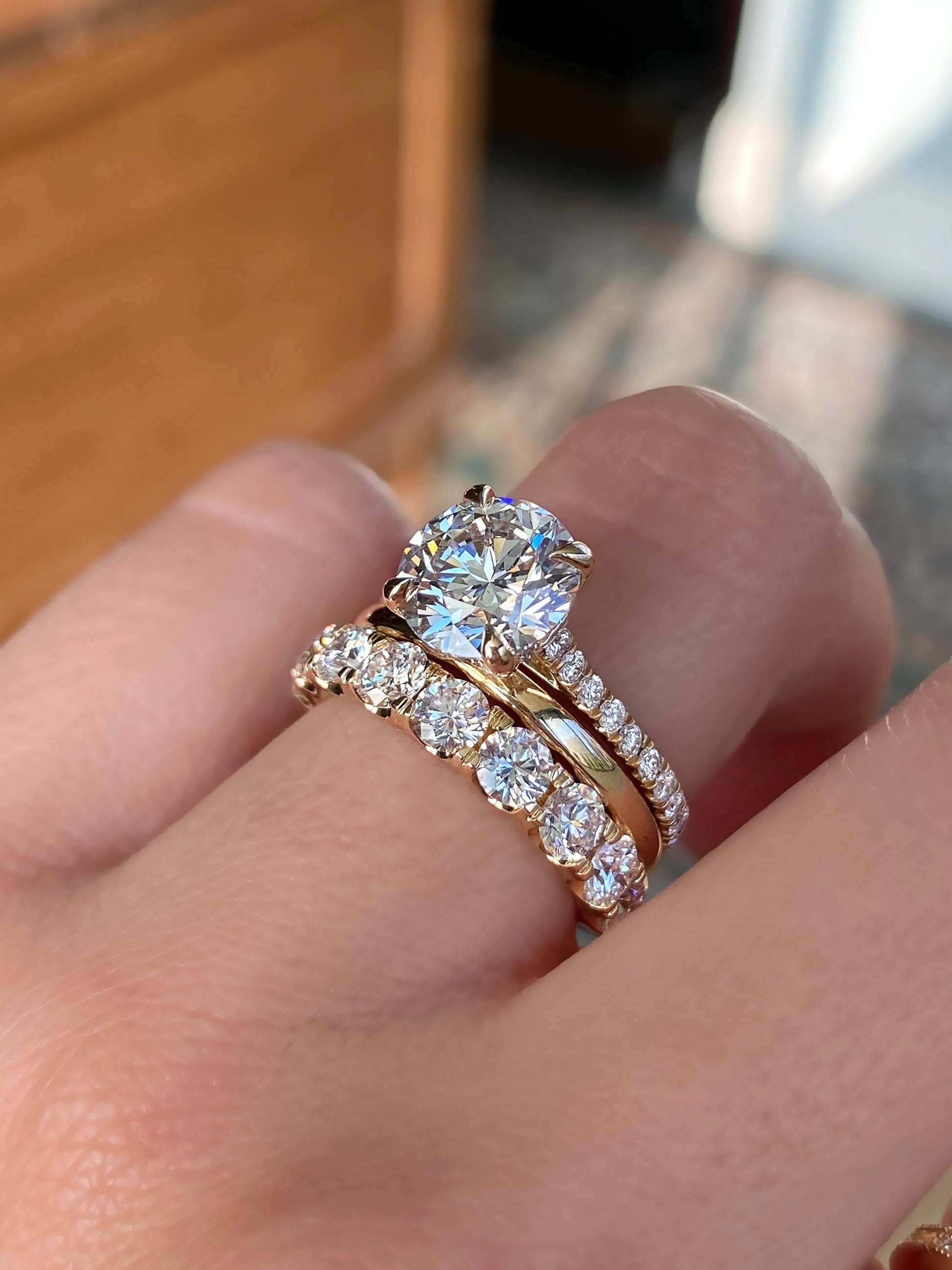
How Diamond Wedding Bands Differ from Engagement Rings
-
Purpose: Engagement rings symbolize the promise of marriage, while wedding bands symbolize the marriage itself (exchanged during the wedding ceremony).
-
Design: Engagement rings often have a focal point (a large center diamond or gemstone), while wedding bands are symmetrical and uniform (diamonds evenly spaced or integrated into the band).
-
Wearability: Wedding bands are designed for 24/7 wear—they’re low-profile, with no large prongs or protruding diamonds that can snag. Engagement rings may be more delicate and sometimes removed for activities like cooking or working out.
Why Are Diamond Wedding Bands So Popular?
Diamond wedding bands have remained a top choice for couples because they balance symbolism, style, and practicality. Their popularity spans cultures and generations, from traditional weddings to modern elopements. Below are the key reasons they’re a beloved wedding staple:
Symbolism of Eternal Love
Diamonds are synonymous with permanence—they’re formed over billions of years and resist wear, making them a perfect metaphor for marriage. A diamond wedding band’s sparkle represents the joy and light of a lifelong partnership, while its circular shape symbolizes “no beginning, no end” — a visual promise of forever. For many couples, this symbolism is more meaningful than a plain metal band, turning the ring into a daily reminder of their vows.
Versatility for Daily Wear
Unlike elaborate engagement rings or statement jewelry, diamond wedding bands are designed to fit seamlessly into everyday life:
-
Low-Profile: Settings like channel or bezel keep diamonds flush with the band, so they don’t snag on clothing, towels, or work tools.
-
Subtle Sparkle: Small, evenly spaced diamonds add shine without being distracting—perfect for office environments, parenthood, or casual outings.
-
Gender-Neutral Options: Men’s diamond wedding bands (often with a single row of small pavé diamonds or a subtle channel setting) let both partners wear a piece that reflects their style, not just traditional gender norms.
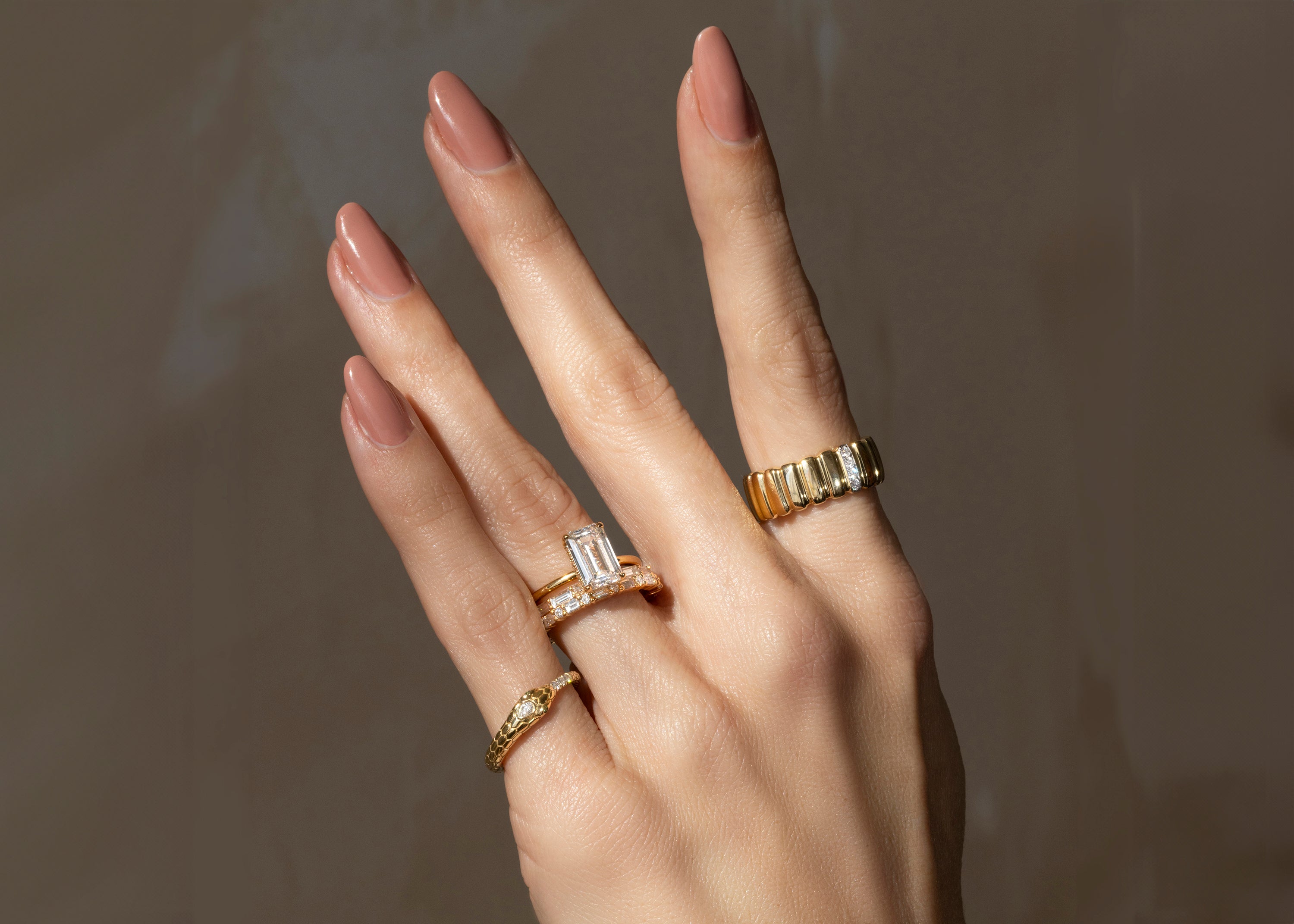
Timeless Style That Transcends Trends
Wedding bands are meant to be worn for decades, and diamond wedding bands never go out of style. Unlike trendy jewelry (e.g., colored metal bands or shaped designs) that may feel dated in 10 years, a classic diamond wedding band—whether in platinum, white gold, or yellow gold—will still look elegant in 50 years. This timelessness also makes them ideal heirlooms, passed down to children or grandchildren as a symbol of family love.
Customization to Reflect Personal Style
Diamond wedding bands aren’t one-size-fits-all—they can be tailored to match a couple’s unique taste:
-
Mix Metals: Pair a white gold diamond band with a yellow gold engagement ring for a modern two-tone look.
-
Choose Settings: Opt for a full eternity band for maximum sparkle, or a half-eternity band for practicality.
-
Add Engravings: Etch the wedding date, vows, or a meaningful phrase (e.g., “Forever & Always”) inside the band for a personal touch.
This customization ensures the band feels like “yours,” not just a generic piece of jewelry.
Popular Styles of Diamond Wedding Bands
Diamond wedding bands come in a range of designs, from classic to contemporary, ensuring there’s a style for every couple. Below are the most in-demand options, split by gender and aesthetic:
Women’s Diamond Wedding Bands
Women’s styles often feature more intricate diamond arrangements and delicate details:
-
Channel-Set Eternity Band: A 14k white gold band with small diamonds (0.03–0.05 carats each) set in a smooth channel, encircling the entire band. The continuous line of sparkle is timeless, and the smooth surface is perfect for daily wear. Available in 0.25–1.00 TCW.
-
Pavé Half-Eternity Band: A 14k rose gold band with tiny pavé diamonds on the top half (0.30–0.50 TCW). The rose gold adds warmth, and the half-eternity design prevents diamonds from rubbing against the palm (ideal for those who use their hands often, like teachers or chefs).
-
Bezel-Set Solitaire Wedding Band: A minimalist 18k yellow gold band with a single small diamond (0.10–0.25 carats) set in a bezel. Perfect for pairing with a solitaire engagement ring—adds subtle sparkle without competing with the engagement diamond.
-
V-Shaped Diamond Band: A modern band designed to fit around a solitaire engagement ring’s center stone, with diamonds set in a V-shape. The design creates a cohesive “set” look, ideal for couples who want their engagement and wedding rings to complement each other.
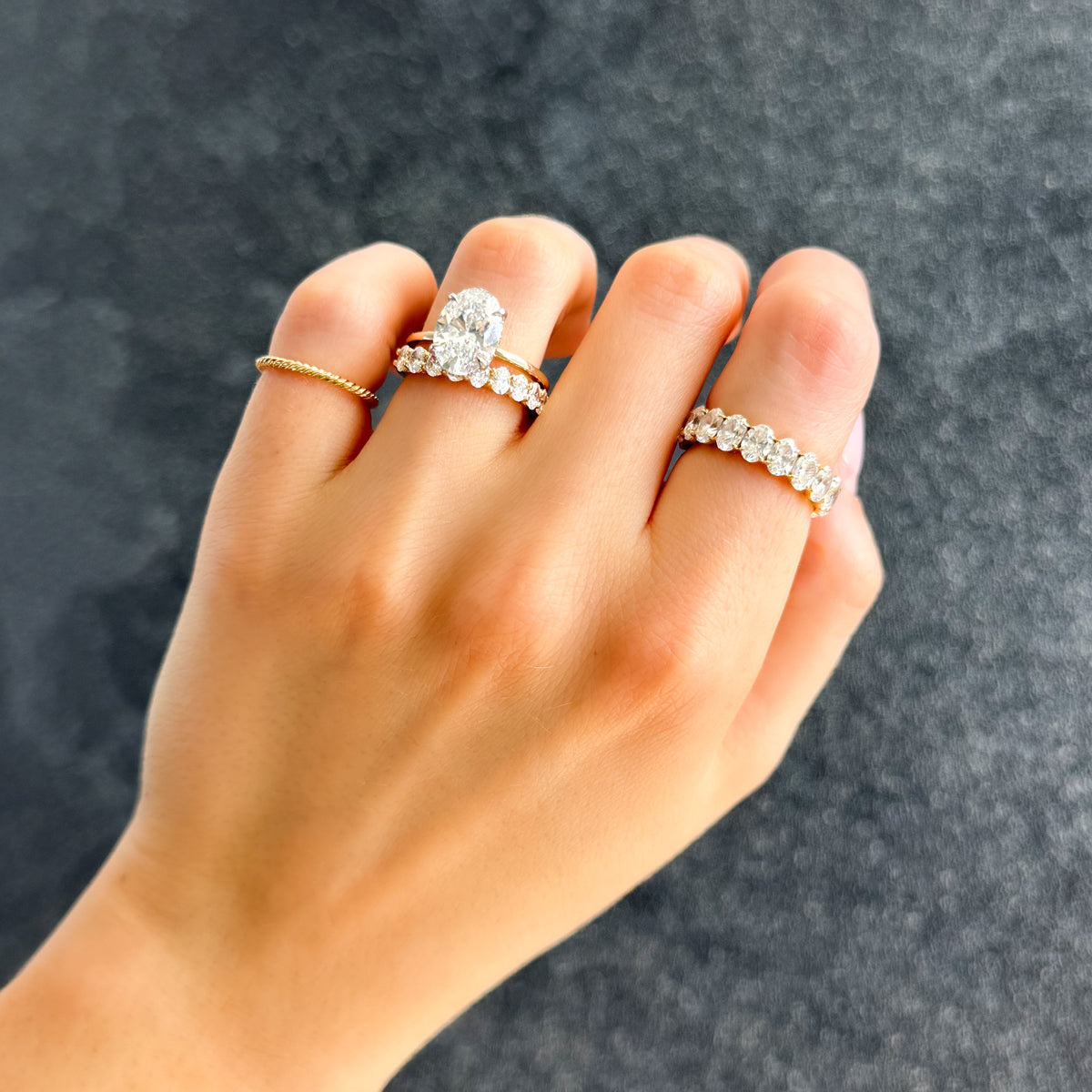
Men’s Diamond Wedding Bands
Men’s styles prioritize simplicity, durability, and understated sparkle:
-
Sleek Channel-Set Band: A platinum or 14k white gold band (6–8mm wide) with a single row of small diamonds (0.02–0.04 carats each) set in a narrow channel. The wide band feels masculine, and the channel setting protects diamonds from wear (great for hands-on jobs).
-
Pavé Edge Band: A 14k yellow gold band with tiny pavé diamonds along the top edge (0.10–0.30 TCW). The rest of the band is plain metal, balancing sparkle with a rugged, everyday look.
-
Black Titanium Diamond Band: A modern option—black titanium (scratch-resistant and lightweight) with a single small diamond (0.05–0.10 carats) set in a bezel. The dark metal contrasts with the diamond’s sparkle, creating an edgy, contemporary style.
-
Two-Tone Diamond Band: A combination of white gold (for the diamond setting) and yellow gold (for the band), with a small row of channel-set diamonds. Two-tone designs are versatile, pairing with both silver and gold accessories.
Unisex Diamond Wedding Bands
These styles work for any gender, emphasizing simplicity and versatility:
-
Thin Pavé Band: A 2–3mm wide sterling silver or 14k gold band with tiny pavé diamonds (0.01–0.03 carats each) along the top. Thin bands are lightweight and stackable, perfect for couples who want to add additional bands (e.g., anniversary bands) later.
-
Milgrain-Edged Diamond Band: A band with small diamonds set in a channel, plus a delicate milgrain (tiny metal beads) along the edges. The milgrain adds a vintage touch, making it a great choice for couples who love classic, timeless designs.
How to Wear Diamond Wedding Bands
Wearing a diamond wedding band is simple, but there are subtle styling choices to enhance its look—whether you’re pairing it with an engagement ring, stacking it with other bands, or wearing it alone. Below are tips for different scenarios:
Pairing with an Engagement Ring
For most couples, the wedding band is worn alongside the engagement ring—here’s how to style them together:
-
Matching Metal: Choose a wedding band in the same metal as the engagement ring (e.g., white gold engagement ring + white gold wedding band) for a cohesive look. If the engagement ring is two-tone, pick the dominant metal for the wedding band.
-
Complementary Settings: If the engagement ring has a solitaire diamond, a pavé or channel-set wedding band adds sparkle without competing. If the engagement ring has a halo setting, a plain metal band (or a band with very small diamonds) keeps the focus on the engagement ring.
-
Wearing Order: Traditionally, the wedding band is worn closest to the heart (on the inside), with the engagement ring on top. This symbolizes the wedding band as the foundation of the marriage, with the engagement ring as the promise that preceded it.
Stacking with Other Bands
Over time, many couples add anniversary bands or additional wedding bands—here’s how to stack them:
-
Mix Settings: Pair a channel-set wedding band with a pavé anniversary band for texture. For example: engagement ring (solitaire) + wedding band (channel-set) + anniversary band (pavé).
-
Stick to a Color Palette: Mixing metals is trendy, but limit yourself to 2–3 metals (e.g., white gold, rose gold) to avoid a cluttered look. For a more classic vibe, stick to one metal.
-
Balance Widths: If your wedding band is thin (2–3mm), stack it with other thin bands (2–3mm). If it’s wide (6–8mm), wear it alone or with one thin band to avoid overwhelming the finger.
Wearing Alone (For Non-Engagement Scenarios)
Some couples skip engagement rings, or wear the wedding band alone for practicality—here’s how to make it stand out:
-
Choose a Statement Style: If wearing the band alone, opt for a half-eternity or pavé band (more sparkle than a plain metal band). A bezel-set band with a larger diamond (0.25–0.50 carats) also works well as a standalone piece.
-
Pair with Minimal Jewelry: Keep other hand jewelry simple—avoid large bracelets or statement rings that compete with the wedding band. A thin watch or small stud earrings complement the band’s sparkle.
-
Consider Finger Placement: While wedding bands are typically worn on the left ring finger (in Western cultures), some people wear them on the right hand for comfort or cultural reasons. There’s no “right” way—choose what feels best for you.
Diamond Wedding Bands: Perfect Gift for Your Fiancée
A diamond wedding band is a deeply meaningful gift for your fiancée—it’s a preview of the commitment you’ll make on your wedding day, and a piece she’ll wear every day as a reminder of your love. Unlike other pre-wedding gifts (e.g., flowers, jewelry boxes), a diamond wedding band is a lasting investment that will be part of your shared history.
Why It Resonates as a Fiancée Gift
-
Symbolism of Commitment: Gifting a diamond wedding band says, “I’m counting down to our wedding, and I want you to have a piece that represents our future together.” It’s more intentional than a generic gift, showing you’ve thought about your life as a married couple.
-
Everyday Reminder: She’ll wear it daily, long after the wedding—every time she looks at it, she’ll think of the love and effort you put into choosing it.
-
Completes Her Wedding Look: For many women, the wedding band is the final piece of their wedding jewelry. Gifting it to her lets her “try on” her full wedding look early, building excitement for the big day.
Top Diamond Wedding Band Gifts for Your Fiancée
-
Matching Engagement Ring Band: If she has an engagement ring, choose a wedding band that’s designed to fit with it (e.g., a V-shaped band for a solitaire engagement ring, or a pavé band that matches the engagement ring’s pavé details). This ensures the two rings look like a set.
-
Her Birthstone + Diamond Band: A band with small diamonds and her birthstone set alternately. The birthstone adds a personal touch, making the band feel uniquely hers.
-
Engraved Eternity Band: A full eternity band with a hidden engraving inside (e.g., your wedding date, a line from your vows, or a nickname you have for her). The engraving adds sentiment that only the two of you will know about.
Tips for Choosing the Right One
-
Know Her Style: If she loves minimalist jewelry, opt for a thin channel-set or bezel-set band. If she loves sparkle, a pavé or full eternity band is better. Pay attention to the jewelry she already wears—does she prefer gold or silver? Delicate or bold pieces?
-
Check Her Ring Size: Borrow one of her existing rings (e.g., a thin band she wears on her ring finger) to measure, or ask her jeweler for help. If you’re surprising her, choose a band that can be resized (most jewelers offer free resizing within 30 days of purchase).
-
Consider Her Lifestyle: If she has an active job or hobbies (e.g., cooking, gardening), choose a low-profile setting like channel or bezel (no prongs to snag). If she works in an office, a pavé or eternity band is perfect—she can show off its sparkle without worry.
How to Clean Diamond Wedding Bands
Diamond wedding bands are durable, but regular cleaning keeps their diamonds sparkling and prevents buildup of dirt, oil, and lotion—especially important since they’re worn 24/7. The process is simple and can be done at home with common household items.
Daily Care to Maintain Sparkle
-
Wipe After Wear: Use a soft, dry microfiber cloth to wipe the band and diamonds after washing your hands or applying lotion. This removes surface grime that can dull diamond sparkle.
-
Remove During High-Risk Activities: Take off the band before swimming (chlorine can discolor metal and cloud diamonds), working with harsh chemicals (e.g., cleaning products), or doing heavy manual labor (e.g., gardening, construction). These activities can scratch the band or loosen diamond settings.
-
Store Safely When Removed: Place the band in a soft jewelry pouch or a designated compartment in a jewelry box. Avoid tossing it in a purse or drawer—this can cause scratches from other jewelry or objects.
Step-by-Step Deep Cleaning Process
For a thorough clean (aim for once every 1–2 weeks), follow these steps:
-
Gather Supplies: You’ll need a small bowl, warm water, mild dish soap (like Dawn), a soft-bristled toothbrush (designated for jewelry), and a microfiber cloth.
-
Mix the Cleaning Solution: Fill the bowl with warm (not hot) water and add 1–2 drops of mild dish soap. Stir gently to create a soapy solution—avoid using harsh detergents, which can damage metal or strip diamond coatings.
-
Soak the Band: Place the diamond wedding band in the solution and let it soak for 15–20 minutes. This loosens dirt, oil, and lotion buildup from the diamond’s facets and the band’s crevices (especially important for channel or pavé settings, where grime can get trapped).
-
Scrub Gently: Use the soft-bristled toothbrush to gently scrub the band and diamonds. Focus on:
-
Diamond Facets: Scrub in circular motions to remove trapped dirt—this restores the diamond’s sparkle by letting light reflect properly.
-
Settings: For channel settings, brush along the channel to dislodge dirt between diamonds. For pavé settings, use the brush’s tip to clean around the small prongs (avoid pulling or bending prongs).
-
Band Surface: Wipe the metal band to remove skin oils or tarnish (especially for silver or gold-plated bands).
-
Rinse Thoroughly: Hold the band under warm running water to remove soap residue. Be careful—place a strainer in the sink to catch the band if it slips (diamond wedding bands are small and easy to lose).
-
Dry and Buff: Pat the band dry with a lint-free microfiber cloth. Gently buff the diamonds and metal to enhance shine—this step helps the diamond reflect light better, making it look brighter.
Material-Specific Cleaning Tips
-
Platinum Bands: Platinum is resistant to tarnish, so regular soap-and-water cleaning is enough. Avoid using silver polish (it can dull platinum’s finish).
-
Gold Bands (14k/18k): Gold can develop a thin film over time—use a gold-specific jewelry cleaner (available at jewelry stores) once a month to restore its luster.
-
Silver Bands: Silver tarnishes easily—after cleaning with soap and water, polish with a silver polishing cloth to remove tarnish. Store silver bands in an airtight bag to slow tarnishing.
-
Diamond Settings: Never use ultrasonic cleaners on bands with loose prongs (common in older bands) or pavé settings—ultrasonic vibrations can loosen diamonds further. Stick to hand cleaning for these styles.
How Much Does a Diamond Wedding Band Cost?
The cost of a diamond wedding band varies widely based on three core factors: diamond quality (4Cs), metal type, and band design. Below is a detailed breakdown of price ranges to help you budget for this lifelong investment:
Price by Diamond Quality & Design
-
Budget-Friendly (Under $1,000):
-
Diamonds: 0.10–0.25 TCW, Good cut, I-J color, SI2 clarity (eye-clean but with minor inclusions).
-
Setting: Simple channel or bezel setting (1–2 rows of small diamonds).
-
Metal: 14k gold (yellow/white) or sterling silver (for occasional wear).
-
Examples: A 14k yellow gold channel-set band with 0.15 TCW diamonds (\(500–\)700); a sterling silver pavé half-eternity band with 0.20 TCW diamonds (\(300–\)500).
-
Best for: Couples on a tight budget, or those who want a simple band to pair with a more elaborate engagement ring.
-
Mid-Range (\(1,000–\)3,000):
-
Diamonds: 0.25–0.75 TCW, Very Good cut, G-H color, VS2–SI1 clarity (eye-clean, minimal inclusions).
-
Setting: Pavé half-eternity, channel-set full eternity (small diamonds), or bezel-set solitaire band.
-
Metal: 14k gold (any color) or entry-level platinum.
-
Examples: A 14k white gold pavé half-eternity band with 0.50 TCW diamonds (\(1,200–\)1,800); a platinum channel-set band with 0.75 TCW diamonds (\(2,200–\)2,800).
-
Best for: Most couples—balances quality, sparkle, and affordability, with a band that’s durable enough for daily wear.
-
Luxury (\(3,000–\)10,000+):
-
Diamonds: 0.75–2.00+ TCW, Excellent cut, D-F color (colorless), VS1–VVS2 clarity (very few inclusions).
-
Setting: Full eternity bands (diamonds encircling the band), custom designs (e.g., V-shaped bands for solitaire engagement rings), or bands with rare diamonds (e.g., colored diamonds).
-
Metal: 18k gold or platinum (most popular for luxury bands).
-
Examples: An 18k rose gold full eternity band with 1.00 TCW diamonds (\(3,500–\)5,000); a platinum custom pavé band with 2.00 TCW diamonds (\(8,000–\)12,000).
-
Best for: Couples who want a statement piece, heirloom-quality band, or who prioritize rare diamonds and premium metals.
Additional Cost Factors
-
Customization: Custom designs (e.g., engravings, unique settings, or matching an engagement ring’s design) add \(500–\)2,000 to the cost—custom work requires skilled jewelers and extra time.
-
Brand Premium: Luxury brands (e.g., Tiffany & Co., Cartier) charge 30–50% more for their name and craftsmanship. For example, a Tiffany 14k gold channel-set band with 0.50 TCW diamonds costs \(2,500–\)3,000, compared to \(1,200–\)1,800 for a non-branded equivalent.
-
Wedding Band Sets: Buying a “his and hers” diamond wedding band set often saves 10–15% compared to buying individual bands. Sets typically include a women’s mid-range band and a men’s minimalist band (0.05–0.25 TCW).
Can I Add Diamonds to My Wedding Band?
Yes—adding diamonds to an existing wedding band is a popular way to update the band (e.g., for an anniversary) or customize a plain metal band. However, the feasibility depends on the band’s design, metal type, and condition. Below is what you need to know:
When Adding Diamonds Is Possible
-
Plain Metal Bands: Solid metal bands (14k gold, platinum) with no existing settings are the easiest to modify. Jewelers can cut channels, add prongs, or create bezel settings to fit diamonds—ideal for turning a plain band into a diamond band.
-
Existing Diamond Bands: If your band already has diamonds (e.g., a half-eternity band), jewelers can add more diamonds to fill gaps (e.g., extending a half-eternity band to a full eternity band) or replace small diamonds with larger ones.
-
Sturdy Metals: Platinum and 14k gold are the best metals for adding diamonds—they’re durable enough to support new settings and won’t bend or break during modification. Avoid adding diamonds to silver or gold-plated bands (they’re too soft to hold settings securely).
When Adding Diamonds May Not Be Possible
-
Thin or Weak Bands: Bands thinner than 2mm (common in delicate women’s bands) can’t support diamond settings—adding prongs or channels may weaken the band, causing it to snap or bend.
-
Damaged Bands: Bands with cracks, tarnish, or loose prongs need repairs first. If the damage is severe (e.g., a cracked platinum band), adding diamonds may not be safe (the band could fail, losing the new diamonds).
-
Low-Quality Metals: Gold-plated or sterling silver bands are too soft to hold diamond settings long-term—new diamonds may fall out within months. It’s better to replace these bands with a sturdier metal (14k gold/platinum) if you want to add diamonds.
The Process of Adding Diamonds
-
Consult a Jeweler: Visit a reputable jeweler (preferably the one who sold you the band) to assess if your band can be modified. They’ll check the band’s thickness, metal quality, and condition.
-
Choose Diamonds: Select diamonds that match your band’s existing diamonds (if any) in cut, color, and clarity. For plain bands, opt for small diamonds (0.02–0.05 carats each) to keep the design balanced.
-
Select a Setting: Choose a setting that fits the band’s style—channel settings for plain bands, pavé settings for a sparkly look, or bezel settings for a modern vibe.
-
Modify the Band: The jeweler will cut the band (for channel settings), add prongs (for pavé settings), or shape metal (for bezel settings) to fit the new diamonds. This step takes 1–2 weeks.
-
Inspect and Clean: After modification, the jeweler will clean the band and check that the new diamonds are secure. They’ll also polish the metal to ensure the modified area matches the rest of the band.
Cost of Adding Diamonds
Adding diamonds to a wedding band costs \(200–\)1,500+, depending on:
-
Number of Diamonds: Adding 1–2 small diamonds (\(200–\)500); adding 5+ diamonds (\(800–\)1,500).
-
Setting Type: Channel settings (\(300–\)600); pavé settings (\(500–\)1,000) (more labor-intensive).
-
Metal Modification: Thick bands may require extra labor to cut or shape (\(100–\)300).
Can I Add Diamonds to My Wedding Band? (Expanded)
As touched on earlier, adding diamonds to a wedding band is a great way to refresh its look or mark a milestone (e.g., a 5th wedding anniversary). However, it’s important to understand the long-term implications to ensure your band remains durable and secure.
Benefits of Adding Diamonds
-
Personalization: Turn a plain metal band into a unique piece that reflects your style—add diamonds to match your engagement ring, or include birthstones for your children.
-
Milestone Celebration: Adding diamonds to mark an anniversary (e.g., 1 diamond for 1 year, 5 diamonds for 5 years) turns the band into a “living” symbol of your marriage.
-
Cost-Effective Update: Instead of buying a new diamond wedding band, adding diamonds to your existing band saves money while giving it a fresh look.
Potential Risks to Consider
-
Weakened Band: Cutting into the band to add settings (e.g., channels) can weaken the metal, especially for thin bands. A jeweler will reinforce the band during modification, but it may never be as strong as a band designed with diamonds from the start.
-
Mismatched Diamonds: If your band already has diamonds, new diamonds may not match perfectly in color or cut—this is more noticeable in bright light. Ask the jeweler to show you diamond options that closely match your existing ones.
-
Resale Value: Modified bands often have lower resale value than original diamond bands—buyers may be wary of aftermarket modifications (e.g., loose prongs from setting work). If you plan to pass the band down as an heirloom, this is less of a concern.
Frequently Asked Questions About Diamond Wedding Bands
Q: How long will a diamond wedding band last?
A: With proper care, a diamond wedding band can last a lifetime—even generations. Diamonds are the hardest natural substance (10 on the Mohs scale), so they won’t scratch or wear down. Metals like platinum or 14k gold are durable enough to resist daily wear, though they may develop minor scratches (easily polished out by a jeweler). The key to longevity is regular cleaning, safe storage, and avoiding high-risk activities (e.g., heavy labor) while wearing the band.
Q: Are diamond wedding bands suitable for people with sensitive skin?
A: Yes—if you choose the right metal:
-
Platinum: Hypoallergenic (contains no nickel), making it ideal for sensitive skin. It’s the most expensive option but the safest for those prone to irritation.
-
14k Gold: Most 14k gold contains very little nickel (less than 0.5%), so it’s hypoallergenic for most people. Avoid 10k gold (higher nickel content) or gold-plated bands (nickel is often used in the base metal).
-
Sterling Silver: Look for “nickel-free sterling silver”—standard silver contains nickel, which can cause redness or itching. Nickel-free silver uses copper or zinc instead.
Test the band in-store by wearing it for 1–2 hours—if no irritation occurs, it’s safe for regular wear.
Q: Can I wear my diamond wedding band every day?
A: Absolutely! Diamond wedding bands are designed for 24/7 wear—they’re low-profile, durable, and resistant to daily damage. However, take it off for:
-
Swimming: Chlorine can discolor metal and cloud diamonds.
-
Harsh Chemicals: Cleaning products, hair dye, or perfume can damage metal or loosen diamond settings.
-
Heavy Labor: Gardening, construction, or weightlifting can scratch the band or bend prongs.
With these precautions, your band will stay in great condition for years.
Q: What’s the difference between a half-eternity and full-eternity diamond wedding band?
A: The main difference is the number of diamonds and their placement:
-
Half-Eternity Band: Diamonds cover the top half of the band (the part that faces up when worn). They’re more practical for daily wear—no diamonds rub against the palm (preventing irritation) and fewer diamonds mean a lower cost.
-
Full-Eternity Band: Diamonds encircle the entire band, symbolizing “eternal love.” They’re more sparkly but less practical—diamonds on the inner side can rub against the finger (causing discomfort) and are more prone to wear.
Choose a half-eternity band for daily use, or a full-eternity band if you want maximum sparkle for special occasions.
Q: Do diamond wedding bands hold their value?
A: Yes—diamond wedding bands hold their value better than most jewelry, especially if they’re made with high-quality materials:
-
Diamonds: GIA-certified diamonds with Excellent cut, VS2+ clarity, and G-H+ color retain the most value. Small diamonds (common in wedding bands) hold value, but not as much as large center diamonds (in engagement rings).
-
Metal: Platinum and 14k gold retain value better than silver or gold-plated metals. Platinum is a precious metal, so its value often increases over time.
Expect to get 40–60% of the original purchase price when reselling a diamond wedding band—more if it’s a luxury brand (e.g., Tiffany) or has rare diamonds.
Conclusion: Diamond Wedding Bands—Sparkle That Lasts a Lifetime
A diamond wedding band is more than just a piece of jewelry—it’s a tangible symbol of the love, commitment, and memories you’ll share with your partner for a lifetime. From its durable diamonds (formed over billions of years) to its timeless metal band (crafted to withstand daily wear), every detail is designed to mirror the permanence of your marriage. Whether you choose a simple channel-set band for daily wear, a full-eternity band for maximum sparkle, or a custom design that tells your unique love story, it’s a piece that will grow with you—marking anniversaries, family milestones, and the quiet moments that make marriage special.
Now that you know how to choose, care for, and even customize a diamond wedding band, it’s time to invest in a piece that will last as long as your love. Browse our curated collection of diamond wedding bands—from budget-friendly 14k gold styles to luxury platinum designs—and use code DIAMONDBAND30 to get 30% off your first order. Whether you’re shopping for your upcoming wedding or surprising your fiancée with a pre-wedding gift, a diamond wedding band is the perfect way to celebrate your forever—with sparkle that lasts a lifetime. Shop now and start your journey of eternal love with a band that shines as bright as your commitment.


